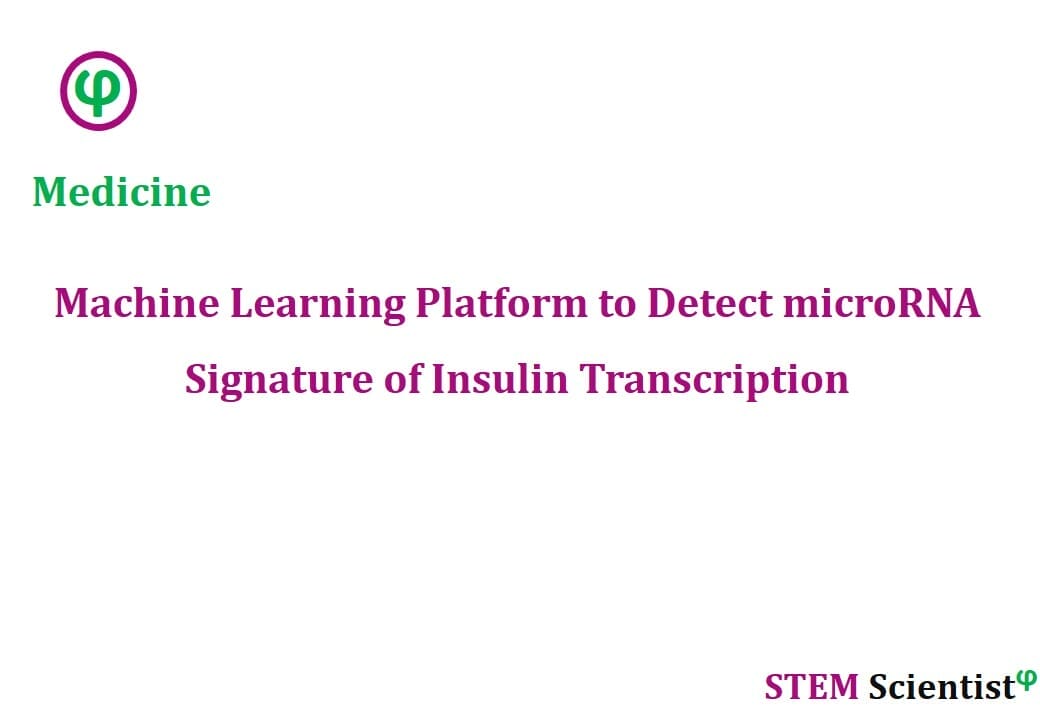
The following study was conducted by Scientists from Diabetes and Islet Biology Group, School of Medicine, Western Sydney University, NSW, Australia; Diabetes and Islet Biology group, Faculty of Medicine and Health, University of Sydney, NSW, Australia; School of Life Sciences and the Centre for Health Technologies, University of Technology Sydney, NSW, Australia; Department of Medicine and Therapeutics, and Hong Kong Institute of Diabetes and Obesity, and Li Ka Shing Institute of Health Sciences, The Chinese University of Hong Kong, Prince of Wales Hospital, Hong Kong, Special Administrative Region, China; Diabetes and Islet Biology Group, School of Medicine, Western Sydney University, NSW, Australia; Department of Science and Environment, Roskilde University, Roskilde, Denmark; School of Life Sciences and the Centre for Health Technologies, University of Technology Sydney, NSW, Australia; Centre for Transplant and Renal Research, Westmead Institute for Medical Research, University of Sydney, NSW, Australia; Faculty of Medicine Health and Human Sciences, Macquarie University, Sydney, NSW, Australia; Centre for the Endothelium, Vascular Biology Program, Centenary Institute, University of Sydney Medical School, NSW, Australia; NHMRC Clinical Trials Centre, University of Sydney, NSW, Australia; Department of Human Genetics-Precision Medicine Program, Sidra Medicine, Doha, Qatar; St Vincent’s Institute and The University of Melbourne Department of Medicine, VIC, Australia. Study is published in iScience Journal – Cell Press Publishing as detailed below.
iScience Journal – Cell Press Publishing (2021)
Machine Learning Workflows Identify a MicroRNA Signature of Insulin Transcription in Human Tissues
Highlights
- Unbiased machine learning workflow ranks miRNAs associated with insulin transcription
- Forced expression of top-ranked miRNAs drives pro-endocrine program in progenitor cells
- Knockdown of top-ranked miRNAs retards insulin gene transcription in human islets
- Insulin transcript-associated miRNAs are reduced in islets of donors with type 2 diabetes
Summary
Dicer knockout mouse models demonstrated a key role for microRNAs in pancreatic β-cell function. Studies to identify specific microRNA(s) associated with human (pro-)endocrine gene expression are needed. We profiled microRNAs and key pancreatic genes in 353 human tissue samples. Machine learning workflows identified microRNAs associated with (pro-)insulin transcripts in a discovery set of islets (n = 30) and insulin-negative tissues (n = 62). This microRNA signature was validated in remaining 261 tissues that include nine islet samples from individuals with type 2 diabetes. Top eight microRNAs (miR-183-5p, -375-3p, 216b-5p, 183-3p, -7-5p, -217-5p, -7-2-3p, and -429-3p) were confirmed to be associated with and predictive of (pro-)insulin transcript levels. Use of doxycycline-inducible microRNA-overexpressing human pancreatic duct cell lines confirmed the regulatory roles of these microRNAs in (pro-)endocrine gene expression. Knockdown of these microRNAs in human islet cells reduced (pro-)insulin transcript abundance. Our data provide specific microRNAs to further study microRNA-mRNA interactions in regulating insulin transcription.
Source:
iScience Journal – Cell Press Publishing
URL: https://www.cell.com/iscience/fulltext/S2589-0042(21)00347-3
Citation:
Wong, W.K.M., Joglekar, M.V., Saini, V., Jiang, G., Dong, C.X., Chaitarvornkit, A., Maciag, G.J., Gerace, D., Farr, R.J., Satoor, S.N., Sahu, S., Sharangdhar, T., Ahmed, A.S., Chew, Y.V., Liuwantara, D., Heng, B., Lim, C.K., Hunter, J., Januszewski, A.S., Sørensen, A.E., Akil, A.S.A., Gamble, J.R., Loudovaris, T., Kay, T.W., Thomas, H.E., O’Connell, P.J., Guillemin, G.J., Martin, D., Simpson, A.M., Hawthorne, W.J., Dalgaard, L.T., Ma, R.C.W., Hardikar, A.A., 2021. Machine learning workflows identify a microRNA signature of insulin transcription in human tissues. iScience 24(4).


